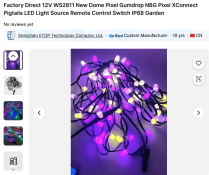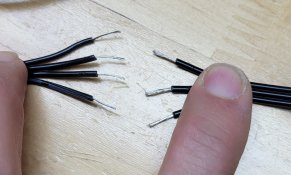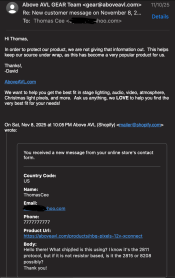ThomasCee
New elf
- Joined
- Nov 9, 2025
- Messages
- 9
What a refreshing group. You Christmas loving peeps are amazing. I'm new, and thought I better start my own thread rather than inadvertently hijacking others with my learning.
That GS2808 thread sold me on starting with them, either China-direct from Ray Wu, Paul from Etop, Shiji-leds, or alternatively a local reseller.
@merryoncherry, you mentioned:
Furthermore, I asked about the NBG type pixels on the image below and you mentioned:

So I guessssssss.....
To tie together my question...
– 8208 looked promising for a pixel/node type.
– NBG/Dome style (not sure what else to call them; but not chip based, only an LED module (I'm seeing RGB and RGBW, the latter of which I would assume would be the most efficient) )
– Evo's (or are they "Duo's?"; they are yet a different type? Related to the NBG/Dome style? Or are they a completely different animal?
Hope that wasn't too many questions in one post
That GS2808 thread sold me on starting with them, either China-direct from Ray Wu, Paul from Etop, Shiji-leds, or alternatively a local reseller.
@merryoncherry, you mentioned:
Can you or others elaborate? Am I shooting myself in the foot going the 8208 route? They look great on paper as you say.I run a few thousand of the duos. There are reasons 8208 haven't really taken off, despite technical merits.
Furthermore, I asked about the NBG type pixels on the image below and you mentioned:
All of these little 12V pixels like the ones in your image have the power efficiency of the 8208s also (and generally use less current, so have much lower peak power usage). They're not based on discrete chips (WS2811, GS8208) on PCBs, they're based on little LED modules that are soldered directly to the wires. They're wonderful in the cases where you can use them (HDPEs, tree strips), but mixed results in coros. You can get just about anything on Ali, but there are several US vendors stocking a variety of these domes if you need them in a hurry. (Scott, Yvette, Wally's lights, etc.).

So I guessssssss.....
To tie together my question...
– 8208 looked promising for a pixel/node type.
– NBG/Dome style (not sure what else to call them; but not chip based, only an LED module (I'm seeing RGB and RGBW, the latter of which I would assume would be the most efficient) )
– Evo's (or are they "Duo's?"; they are yet a different type? Related to the NBG/Dome style? Or are they a completely different animal?
Hope that wasn't too many questions in one post




